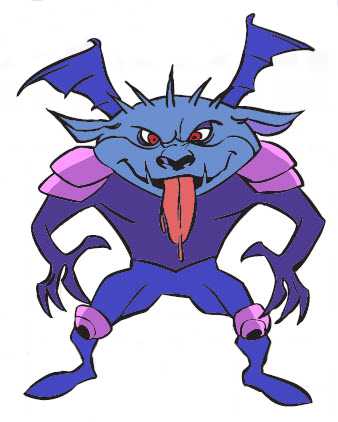Case file: Tissue Trolls
- Real name: diphtheria
- Known aliases: corynebacterium diphtheriae (full name of the bacterium that causes diphtheria)
- Microbe type: bacterium
 PROFILE
PROFILE
Diphtheria (pronounced dip-THEER-ee-uh) is a poisonous, toxic infector. When diphtheria strikes, its bacteria swarm and multiply in a victim’s nose and throat. The bacteria release a poison that can cause a grayish membrane to form and coat the inside of the victim’s throat. The membrane can cause breathing problems. Diphtheria can also strike other parts of the body, as its poison often leads to heart and nerve problems.
POWERS & ABILITIES
This attacker can kill. In the 1920s, before the vaccine was available, up to 15,000 people in the United States died from diphtheria every year. And, 100,000 to 200,000 people got sick from the disease. Now that we can shield ourselves with vaccines, fewer than five people get diphtheria each year.
Diphtheria is a stubborn one. If people with diphtheria don’t get treated, they can spread the disease for up to 4 weeks.
PREFERRED METHOD OF ATTACK
Diphtheria is an “air and surface” attacker. The cough or sneeze of a person who has a throat full of diphtheria bacteria releases tiny droplets into the air. If someone else breathes in that wetness, diphtheria rides in, ready to start another infection. Diphtheria also loves to lie in wait on some surfaces—like in the mucus on a used tissue or on a toy that’s been in an infected person’s mouth.
KNOWN WEAKNESSES
This villain is almost always foiled by the vaccine against it. Almost everyone with up-to-date diphtheria vaccine is protected. To make the vaccine, scientists use chemicals to “inactivate” diphtheria toxin. This dead toxin is called a “toxoid.” The toxoid teaches your immune system how to fight diphtheria, but can’t make you sick.
Diphtheria vaccine is always combined with vaccines for other diseases. Often, it’s given to kids as part of a powerful combination vaccine called “DTaP” because it protects against diphtheria, tetanus, and pertussis (whooping cough).
PREFERRED VICTIMS
Children were once diphtheria’s favorite victims. But, in the U.S., so many children are now immunized that diphtheria was forced to change its plan of attack. The disease now targets adults who have not had the vaccine recently. The vaccine’s protection fades over time. So, people without a “booster” dose of diphtheria vaccine are left without their best defense against diphtheria’s assault.
PRECAUTIONS FOR THE PUBLIC
We have to be very careful with this poisonous attacker. The vaccine will keep a person from getting sick, but a vaccinated person can still spread the bacteria to others.
To keep this bad guy at bay, make sure your immunization is up to date. And, of course, wash hands with soap and cover up coughs and sneezes.
AREA OF OPERATIONS
Diphtheria launches most of its attacks in winter and spring, but attacks can happen anytime, especially in warmer climates.
CRIMINAL RECORD
Years ago, diphtheria was a common disease among children. And, it was also a common cause of death for children and teenagers. These days, this infector hits hardest among groups of people not protected by the vaccine—regardless of whether they’re children or adults.
Immune Platoon Disease Database
- Page last reviewed: March 9, 2016
- Page last updated: March 9, 2016
- Content source:



 ShareCompartir
ShareCompartir